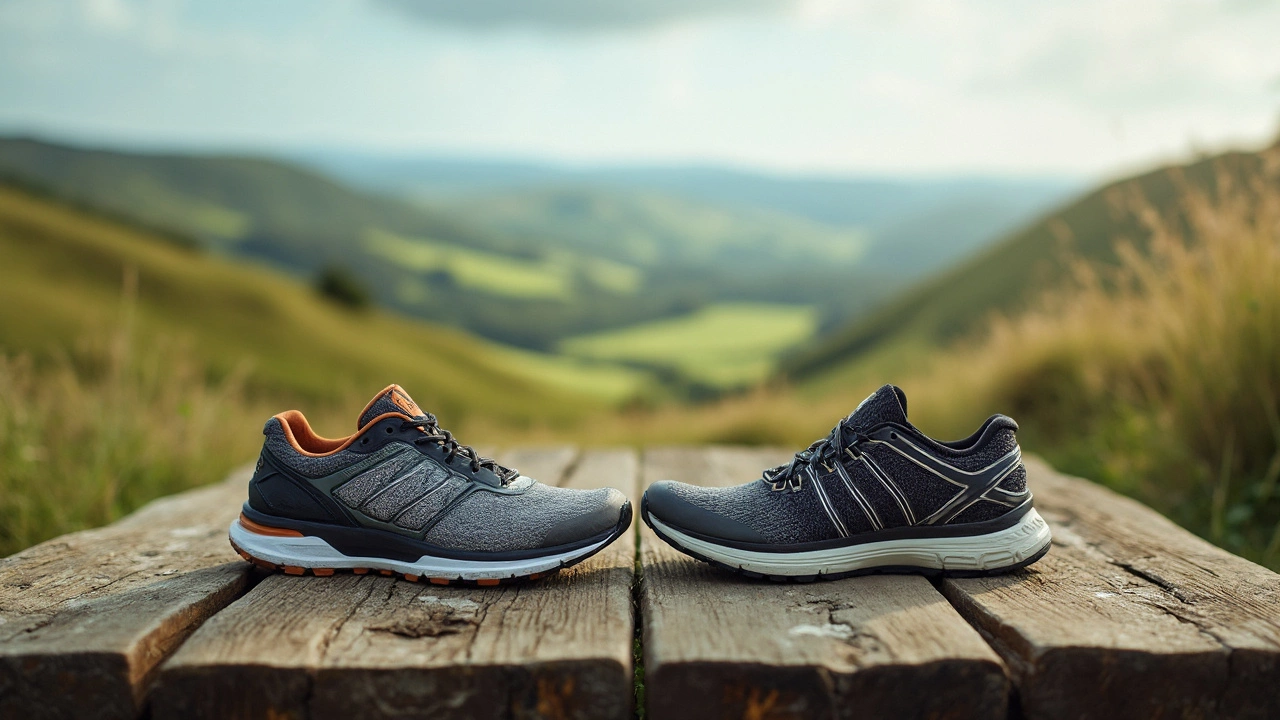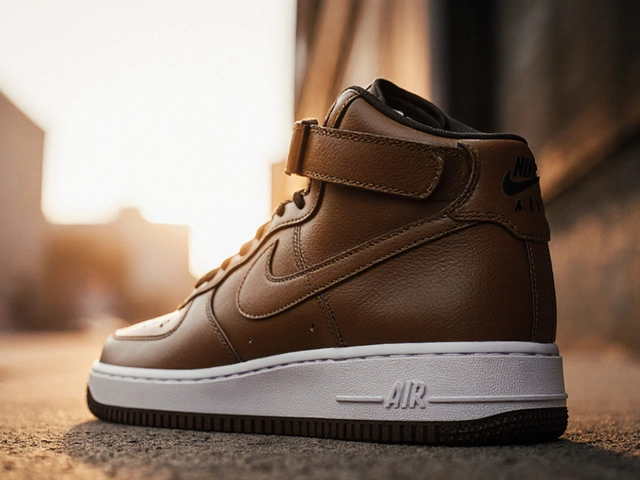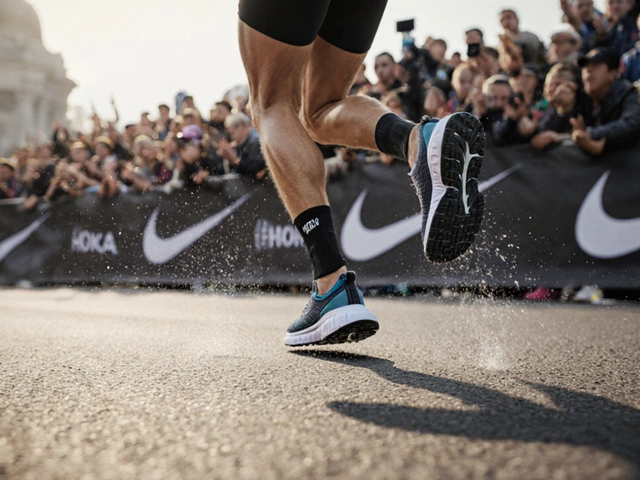So, you've got a pair of running shoes and you're wondering if they can pull double duty for walking. You're not alone in pondering this, and it's a valid question! While it might seem like a simple swap, there are a few things to consider before making running shoes your go-to walkers.
Running shoes are designed with a specific purpose in mind: pounding the pavement at a faster pace. They offer cushioning and support intended for that forward motion and impact. But here's the kicker—when you're walking, your foot motion is different. Walking is a heel-to-toe action with less impact compared to running, which tends to involve heavier, faster steps.
So, does that mean you shouldn't use running shoes for walking? Not exactly. The structure of running shoes can offer great arch support and shock absorption, making them a perfectly valid choice for casual walking or longer strolls. However, if you’re clocking major miles walking, it might be worth checking out shoes specifically designed for walking, with features tailored for that heel-to-toe transition.
Before you hit the sidewalk, take stock of your shoes. If your trusty runners are still in good shape, give them a shot for walking. Just be conscious of how your feet feel and be ready to pivot to a supporting role if you notice discomfort or wear issues over time.
- Running vs Walking: What’s the Difference?
- Benefits of Using Running Shoes for Walking
- When to Skip Running Shoes for Walking
- Tips for Choosing the Right Shoes
Running vs Walking: What’s the Difference?
Alright, let's break it down. Running and walking may seem similar because they're both forms of moving your feet to get from one place to another. But when you look under the hood, you'll find they’re pretty different in some key ways.
How Your Body Moves
Walking is like a steady, controlled motion where one foot is always on the ground. Your stride tends to be shorter, and you hit the ground heel first, rocking onto your toes. This method of moving is great for lower impact on your joints, which is why walking often feels like a more sustainable choice for long distances.
Running, on the other hand, is a whole other beast. There's a moment in every stride when both feet are off the ground, called the flight phase. Your feet hit the ground harder, leading to greater impact forces—the reason why runners often need shoes with more cushioning to absorb those shocks.
Energy and Intensity
Running usually gets your heart pumping faster than walking. According to some studies, running burns about double the calories compared to walking the same distance. No wonder it’s often chosen for weight loss and cardio workouts! However, this also means you can feel fatigue faster if you’re not used to it.
The Shoes You Need
Since the movements and impacts differ, so do the requirements for footwear. Running shoes are designed for that high-impact, faster pace—they pack in cushioning, and the heel section is often raised to help with forward thrust.
On the flip side, walking shoes prioritize arch support and heel stability because of that heel-to-toe motion. They don't necessarily need the extra shock-absorbing capacity, but they do offer more flexibility for a smoother step.
| Activity | Impact Level | Calories Burned per Hour |
|---|---|---|
| Walking | Low | 210-360 |
| Running | High | 600-800 |
So, if you're deciding between running and walking for your next outing—or choosing the right running shoes—think about the movements and intensity each activity demands. Your feet and joints will thank you!
Benefits of Using Running Shoes for Walking
Let's talk about why running shoes can actually be a pretty solid choice for your walking needs. There are a few advantages that might make you want to lace up your runners instead of switching to a new pair.
Comfort and Cushioning
Running shoes are all about cushioning. They've got that extra padding to absorb the shock when you're pounding the pavement at speed. That means they're like little clouds for your feet when you're going at a more relaxed walking pace. So, if comfort is your top priority, running shoes have got your back—er, feet!
Support and Stability
Good footwear is essential, whether you're running a marathon or just stepping around the block. Running shoes are built to provide excellent arch support and stability, which is just as helpful when you're walking. They’ll help keep your feet aligned and reduce the risk of discomfort or injury. If you've got any existing foot conditions, you might find the support particularly beneficial.
Durability
Designed to handle the stresses of running, these shoes are built to last. The hardy materials mean they're a great choice for long-lasting footwear that won't fall apart after a couple of months. Plus, they can handle different terrains, making them versatile for various walking environments, whether you're on a city sidewalk or a park trail.
Flexibility and Breathability
With every step you take, your foot flexes naturally. Running shoes are crafted to accommodate this movement with their flexible design. Not to mention, they often come with breathable materials that keep your feet cool and comfy, especially during those longer walks.
If we stack up some data, you'd see how frequently people use their walking shoes when they're actually running shoes:
| Activity | Usage of Running Shoes |
|---|---|
| Walking for Exercise | 55% |
| Daily Errands | 45% |
So, while it might seem like a surprising choice at first, grabbing your running shoes for your walks can be pretty smart. The comfort, support, and durability they offer are really worth considering. Of course, it all boils down to personal preference and comfort, but it's a good idea to explore this option if you're already a runner.

When to Skip Running Shoes for Walking
Choosing the right shoes involves more than just grabbing whatever's in the closet. Yeah, you can wear running shoes for walking most of the time, but there are a few instances when it might not be the best idea.
The Terrain
If you're tackling trails or uneven surfaces, running shoes might not offer the best stability. They're usually built for flat pavement, so if you're planning nature walks, consider shoes designed for those rugged paths. Shoes with a stiffer sole and better grip are ideal for preventing slips and offering ankle support.
Foot Conditions
Have specific foot issues like plantar fasciitis or overpronation? Running shoes might not provide the specialized arch support that certain walking conditions need. In such cases, opt for shoes designed to cater to these conditions. They can help better distribute your weight and ease the pressure on your sore spots.
Distance Matters
Are you hitting long distances on your walks regularly? This is where shoes specifically crafted for walking take the cake. They often have added support in the arch and more cushioning in the heel, which can make a difference over extended periods.
Life Span of the Shoes
Shoes have a lifespan, typically around 300 to 500 miles for running shoes. If your pair has been through that kind of mileage already, their compression and support could be worn out, making them less than ideal for extensive walking routines.
Climate Conditions
Let's not forget about the weather. Running shoes usually have breathable mesh material, which is great when it's hot out, but less ideal in rain or snow. For those conditions, water-resistant walking shoes can keep your feet dry and cozy.
To make things clearer, here's a small table to help decide when running shoes might not be the best pick:
| Consideration | When to Skip Running Shoes |
|---|---|
| Terrain | Rugged trails, uneven surfaces |
| Foot Conditions | Specific arch support or medical needs |
| Distance | Long-distance walking routines |
| Shoe Condition | Worn-out or exceeded lifespan |
| Weather | Wet or snowy conditions |
Tips for Choosing the Right Shoes
Picking the perfect pair of footwear for walking isn’t just a fashion statement—it's about comfort and preventing injuries. So let's zero in on what you should look for whether you're eyeing those running shoes for your next walking adventure or planning to buy new ones.
1. Assess the Fit
The fit is king when it comes to shoes. Your feet shouldn't slide around inside but should also have some space—about a thumb's width from your longest toe to the shoe's end.
2. Check the Support
Great walking shoes or running shoes have good arch support, which helps maintain your natural foot shape and reduce strain. Look for shoes with reinforced arches and a firm heel counter.
3. Mind the Cushioning
Look for adequate cushioning especially if you're going to use running shoes for walking. It absorbs shock, saving your knees and joints from taking a hit with each step.
4. Flexibility Matters
Try bending the shoe at the ball. Walking shoes should flex where your foot flexes to ensure a smooth stride, while running shoes offer a bit more rigidity for stability.
- Flex at the forefoot—ensures a natural walk
- Stable mid-sole—provides extra balance
5. Breathability for Comfort
Nobody likes sweaty feet. Shoes made with breathable materials keep your feet cool and dry.
6. Try Them On Late in the Day
Your feet swell throughout the day, so trying them on in the afternoon can help you find shoes that remain comfy all day long.
7. Wear Appropriate Socks
Grab the pair of socks you’d normally wear on your walks when trying on shoes to get a better feel for the fit.
| Feature | Walking Shoes | Running Shoes |
|---|---|---|
| Arch Support | Moderate | Higher |
| Cushioning | Even | Enhanced |
| Weight | Lighter | Slightly heavier |
Remember, whether you stick to running shoes or grab a pair meant for walking, listen to your feet. If they feel comfy and supported, you've likely found your match!








